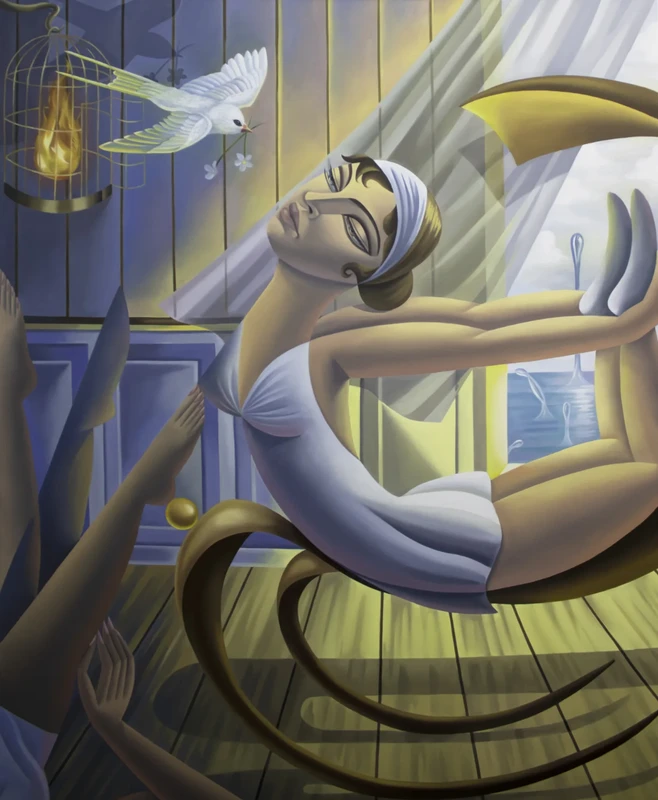Portraits: Through The Looking Glass
20 Feb-22 Mar 2025


Portraits: Through The Looking Glass is a group exhibition showcasing the work of contemporary painters who engage with the multifaceted nature of portraiture. The exhibition title draws a parallel between portraiture and the looking glass to explore portraiture as a mirror to reality or a window into the unseen or imaginary.
The looking glass - a surface so reflective you can see yourself in it - is ubiquitous throughout history, science and art. Whether it's the reflective pool of water through which Narcissus falls in love with his self-image in Ovid's Greek poetry, or the tool for empirical self-assessment behind Rembrandt's portraits, the looking glass has become synonymous with even the painted image itself.
The influence of this reflective surface can be felt most profoundly in Lewis Carroll's novel 'Through the Looking-Glass, and What Alice Found There', where an inquisitive character named Alice enters a fantastical world by climbing through a mirror. After the book's publication in 1871, a looking glass came to also mean "the opposite of what is normal or expected." The transformative potential of the looking glass demonstrates how this famed surface came to transcend any single definition.
Now, our age of digital surfaces further confounds our understanding of how we see ourselves, people and the world around us, and indeed how we present our 'realities' to others. With these artistic, literary and technological references in mind, the title invites artists to consider how portraiture can bridge reality and fantasy, and, how the painted portrait functions today.